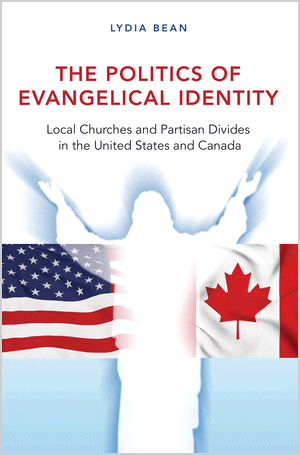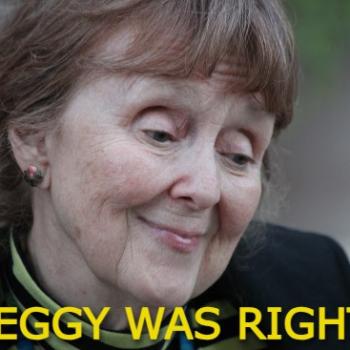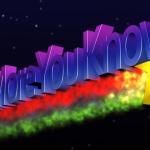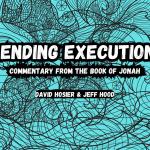As the fall semester begins, I am again enjoying the “virtual office hours” videos regularly posted by history professor/blogger John Fea, who teaches at Messiah College. This year, Dr. Fea is teaching a seminar class on the history of evangelical Christianity in America — they’re reading some terrific books, and the discussions in Fea’s brief, large-man-at-a-small-desk videos are informative and fun.
His second episode for the class — “What is an evangelical?” — gives a good five-minute summary of the various ways people who study religion have tried to define this elusive, slippery category. Fea surveys the religious temperaments of the famous “Bebbington quadrilateral,” and discusses the boundary-defining cultural aspects that came to shape evangelicalism in the 20th century.
The really helpful bit just now, for me, was this important reminder:
Evangelicalism has a certain trans-denominational quality. You can find an evangelical in just about every Protestant denomination. … So an evangelical is not necessarily associated with a denomination, like a Methodist or an Episcopalian or a Baptist, but throughout 18th-, 19th-, 20th-, 21st-century America, evangelicals who embrace the quadrilateral can be found just about anywhere.
This “trans-denominational quality” is why attempts to define or describe evangelicalism have to resort to things like the religious temperaments or emphases of Bebbington. A theological or doctrinal definition won’t work — it would either be so vague as to be meaningless, or else it would inevitably exclude some group or groups that it shouldn’t be excluding.
This is why the tribal gatekeepers of white evangelicalism in America cannot and do not concern themselves with doctrine. They like to employ the rhetoric of doctrinal purity and of heresy hunters, going on about “orthodoxy” or “traditional Christianity” or what is or is not “biblical,” but the substance of their gatekeeping can never be theology or doctrine.
A generation ago, tribal gatekeepers tended to focus more on certain behaviors — drinking, dancing, playing cards, going to movies, etc. You can still find all those tribal indicators listed in old student handbooks from evangelical schools, but apart from the hard-core fundies, no one really takes them seriously anymore. They’re dancing at Wheaton. Professors at Moody can drink.
But those old tribal markers have been replaced by political tribal identifiers — all distinctly partisan. Over the past generation, all those student handbooks and statements of faith have been rewritten to reflect this. Gatekeepers no longer care about drinking and dancing. What they care about now is abortion, abortion, abortion and same-sex marriage.
 That is, again, a New Thing. It was a change in the criteria used by tribal gatekeepers and thus it became a change in core tribal identity — a change in how the tribe identifies itself to itself.
That is, again, a New Thing. It was a change in the criteria used by tribal gatekeepers and thus it became a change in core tribal identity — a change in how the tribe identifies itself to itself.
That’s enormously important. American evangelicals changed the way they answer the question “Who do we say that we are?” And that means, inevitably, that they have also — consciously or not — changed the way they answer the question “Who do you say that I am?”
For Christians, that’s a rather important question. Changing our answer to that bedrock question shouldn’t be something that happens without serious, conscious consideration. And yet that’s what happened.
How did that happen? Where did that change come from?
Dr. Lydia Bean suggests one answer in her book The Politics of Evangelical Identity: Local Churches and Partisan Divides in the United States and Canada. Bean, formerly a sociology professor at Baylor, studied local congregations in Buffalo, N.Y., and in Hamilton, Ontario to understand “Why Canadian Evangelicals Are Different.”
And they are different. They are, shockingly to some here in the U.S., not Republicans. Canada, it turns out, doesn’t have Republicans. And yet they still have white evangelicals. How can this be?
Canada’s white evangelicals, like their American counterparts, tend to be more conservative, but not nearly as partisan. Their identity — their sense of self, of who they are — is not defined by partisan politics the way it is here in America.
(I should note that the discussion of Bean’s book I’m linking to here involves a bit of transparent nepotism. But we shouldn’t fault the author for her father’s enthusiastic recommendation. What makes this awkward here is that I’ll be quoting from Alan Bean as he summarizes the argument of Lydia Bean.)
Alan Bean writes:
American evangelicals have engineered a highly partisan and politicized religion rooted in narratives of Christian nationalism and visions of national revival that results in an almost Manichean drama pitting good against evil. Economic and political forms of conservatism have taken on a sacred quality by being associated with the intimate “identity-work” of congregational life. …
Religious identity has become “so closely intertwined with partisanship,” [Lydia] Bean says, that it has become “socially impossible for evangelicals to identify with the Democratic Party.”
The key here is this notion of identification. Identity is the thing that tribal gatekeepers are in the business of protecting, defining and defending. To identify as anything other than Republican is to be identified as an outsider — as no longer a part of the tribe. To fail to identify as a Republican means your identity will be redefined as no longer evangelical.
Hence the current popularity of the term “post-evangelical.” I’m an evangelical Christian and also a Democrat, I say. No you’re not, say the tribal gatekeepers. If you’re a Democrat then you are, henceforth, a post-evangelical.
This is not a doctrinal or theological category. Nor does it have anything at all to do with the temperaments of the Bebbington quadrilateral. “Post-evangelical” is a partisan political category. It is, roughly, a synonym for born-again white Protestants who vote for Democrats.
And just as “Who do we say that we are?” has been redefined and re-answered according to partisan political criteria, those same Republican criteria have redefined and re-answered that more essential question of “Who do you say that I am?”
Flesh and blood hath not revealed this new answer unto American evangelicalism, but neither did it come from Heaven.
Alan Bean writes:
Beginning in the 1940s, [Lydia] Bean argues, religious and political elites worked out a form of Christian nationalism that created a fearsome symmetry between conservative theology, small-government politics and laissez-faire economics.
In other words, “evangelicalism became bundled with small-government conservatism through a historical process of partisan coalition-building.” “The Christian Right,” [Lydia] Bean argues, “has not just ‘represented’ the values and policy priorities of evangelicals; it has served as an internal movement to shape what these values and policy priorities should be.”
Ding. Yes. The religious right — anti-integrationism transmuted into a surrogate anti-abortionism — did not arise as a political manifestation of the agenda favored by a “moral majority” of evangelicals, it reshaped evangelical identity to circumscribe everything and anything other than support for its political agenda.
American evangelicals, [Lydia] Bean discovered, didn’t reason from religious principles to conservative political and economic views; they imbibed their partisan religious views from the environment that engulfed them on all sides.
The species of religion [Lydia] Bean encountered in the American evangelical churches she studied was a marriage of convenience that had been cobbled together by conservative think tanks and para-church ministries. This movement was heavily reliant upon culture war captains, congregational opinion leaders who imbibed this new nationalistic religion outside the cloistered world of established evangelical life and carried it back to their congregations.
But regardless of whether culture war captains picked up their new partisan world view from the anti-abortion movement or a Focus on the Family conference, they were immersed in all the symbols, songs and therapeutic messaging they grew up with in their churches.
… This constant interplay between prayer for person issues and prayer for the nation lent a sacred aspect to the fight against abortion. This explains the central place of anti-abortion rhetoric within the Christian Right. According to [Lydia] Bean,
Abortion has become sacred for rank-and-file evangelicals because it strengthens a sense of cultural tension with their environment. Understood as a spiritual drama between good and evil, the pro-life cause helps Christians to define their moral and social boundaries against the world.
“The world,” in this case, being the evil side of that “spiritual drama between good and evil.” You know, the Satanic baby-killers.
Alan Bean summarizes one implication of his daughter’s research:
Until we can create new forms of religious community in which solidarity with the poor, creation care and racial reconciliation become sacred through integration into the everyday community life of real congregations, we can’t compete with the Christian Right.
He worries that this seems “unrealistic,” but I’m more hopeful. I think those new forms of religious community are already here, and they’re growing — maybe not in “real congregations,” but certainly in virtual ones. And because those communities recognize the sacredness of care for others and for justice, they can offer a better, truer, more compelling answer to that bedrock question of “Who do you say that I am?”
















